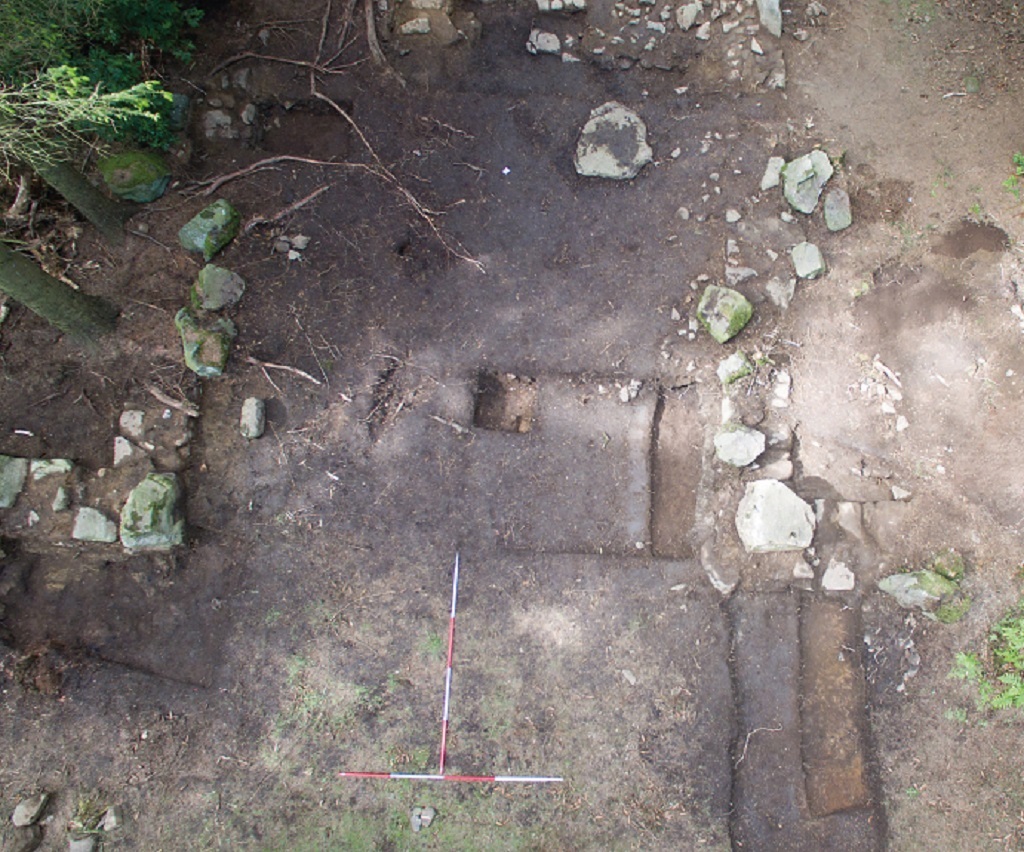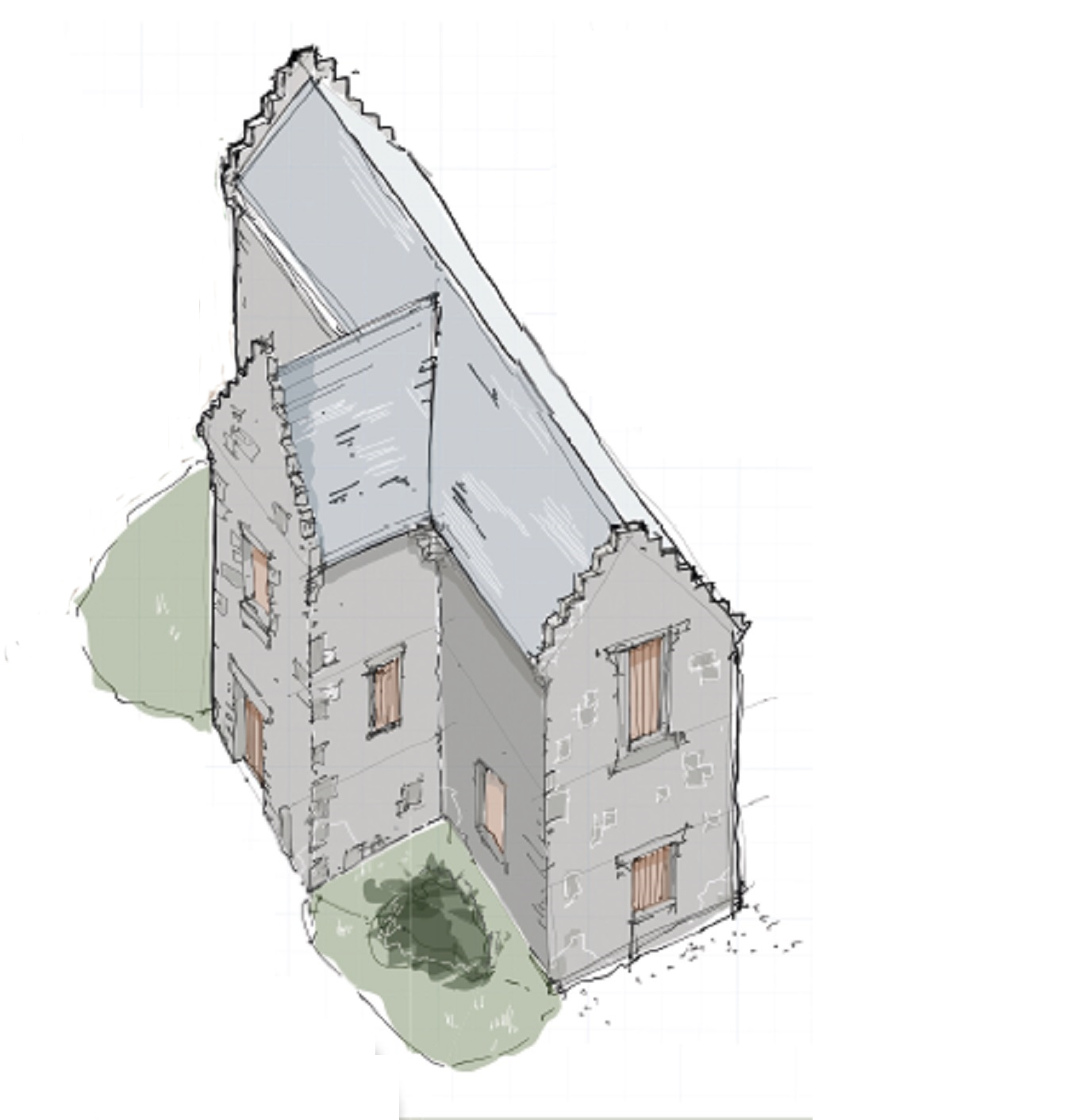
The buried secrets of ruins found in a park
Aden Park is a jewel in the heart of Central Buchan, ‘The Land of Plenty’.
It is situated next to the equally stunning Pitfour Estate. These two picturesque areas are connected via the Buchan Formartine Way.
About four years ago I was walking through Aden Park with my dog Mhorlich when he ran off, probably chasing some intriguing smell. Though he came back soon enough we were worried as we were approaching an area of the woodland I was not familiar with.
As we moved further in, the first thing I noticed was how quiet it was before I then spotted a small area where large boulders had been rolled from the fields into a rough T-shaped outline. About 10 metres north of this I tripped over three stones poking about six inches out of the woodland floor, roughly aligned to the north.
This whole area, with its tantalising traces of lumps and bumps, I would later discover had been used as a secret meeting place by the Episcopalians.
At the time, I was a member of the Book of Deer Project that employed local archaeologists to help in the search for the Monastery of Deer, where the Book of Deer (Scotland’s oldest book containing Scotland’s oldest Gaelic) was written. I showed the site to the archaeologists and they thought that it may have been a pre-improvement farmstead, which itself was great news for the Farming Museum situated in the park.
There was still something nagging me about the area however, and so I visited it regularly to see if I could make some sense of it.
In 2015 the Book of Deer Project had a new resident archaeologist in Ali Cameron of Cameron Archaeology, so I showed Ali the site and she agreed that it would be worth exploring as a possible location for the Monastery (we thought, at the very least, that we could answer some questions and discount the site if necessary).

With patience and expertise the foundations of a T-shaped house became clear during the archaeological work
Two seasons of digs then commenced, the first of which made clear that there were two significant structures on site. The second season – funded by Bruce Main Aberdeenshire Council Archaeology Service and carried out in June 2016 with the help of 36 archaeologists and a range of volunteers – revealed the two clear foundations that lay beneath the woodland floor.
The first was a rectangular structure that may have had an agricultural or mixed domestic and agricultural use.
There is a hearth inside the south wall of the structure, surrounded by a well-laid cobbled floor, and a stonelined pit in the north-east corner of the more northern room which may have been an exterior courtyard.
The second foundation was revealed to be a T-shaped building, probably built in the late medieval period as a tower house or castle, and possibly used later as this ‘Episcopalian Meeting Place’.
Burnt timbers and stones were excavated from the site, showing that the building had been set alight prior to demolition. These artefacts clearly bore witness to a turbulent period in the history of the structure.
Unearthed too were some badly burnt coins from the 17th and 18th century – two Bawbees (sixpence) and a Bodle (twopence) – alongside a copper alloy book fitting, a rim from a late medieval or early post-medieval jug and a copper alloy ‘witches’ brooch (or luckenbooth brooch).
The luckenbooth brooch was one of the most exciting finds from the site. The fear of witches was at its height in the late 16th and early 17th centuries, and the brooch would have been attached to a bairn’s shawl to ward off evil.
In 1599, 23 ‘witches’ were burnt at the stake in Aberdeen, and through my own research I found that in 1601 – just two years after the witch trials – James VI of Scotland (who wrote his own book on witchcraft) visited Aberdeen.
In his Life of Shakespeare, Charles Knight suggests that one of James’ servants at the time, who ‘play comedies and stage plays’, was one William Shakespeare. The story of Macbeth might then have been conceived in Aberdeen, considering the accuracy displayed in the local allusions and descriptions of witchcraft imagery.
So, what is the history behind this site designated ‘The Episcopalian Meeting Place’? My research has revealed much about its turbulent past.
After 1551, the first to rule the Parish Church of Old Deer was Gilbert Chisholm, who had been Prior of Deer Abbey. The last to rule in the Parish Church would be George Keith in 1710. In 1689 the Scottish crown was offered to William and Mary and all the ministers were ordered to pray for the Hanoverians by name in Public Worship.
The Presbyterians were willing to acknowledge the new Monarchy, but the Episcopal bishops and their clergy were still loyal to the Stuart dynasty. As a consequence the Episcopal clergy were ejected from nearly all the parish churches in Buchan.

Chris Jennings’ excellent line drawing of what the house would have looked like.
The church of Deer was one of the few exceptions as nearly all the gentry and farmers were Episcopalian. This included the Earl Marischal, who was a Keith, and it is likely this is why the Old Deer Parish Church minister, George Keith, remained in place until his death in 1710.
After George Keith’s death the people wanted William Livingston, an Episcopalian, as their new minister. The presbytery, however, wanted John Gordon, the son of the Provost of Aberdeen. The attempt to install Gordon would result in a public riot against the provost; this riot was thereafter called ‘the Rabbling of Deer’ and had two key results.
One was the Toleration Act, which affected the whole of Scotland. The second: Gordon was allowed free access to the church and parsonage of Deer. The Provost’s son was eventually ordained in another local church but the gentry and locals of Deer were not allowed another Episcopalian minister into their own, or to hear from any other minister.
It is well documented that the Episcopalians would begin to meet in secret in local woodlands during this time, having been ejected from the parish church in 1711. The locals would go on to build the ‘Meeting House’ on the Earl Marischal’s land at Aden, where I believe they would hold their gatherings, using the house and its pulpit stone.
When Charles landed in Peterhead in 1715, Livingston moved back into the parish church in Deer and prayed for the Catholic ‘Pretender’. In 1719, a law was passed ensuring that no Episcopalian minister could minister to more than nine people in one room unless he prayed for the new Hanoverian Dynasty. It was a law that would remain in force until 1792.
It was after 1745 that things in Deer got really serious. In 1746 the Duke of Cumberland’s troops set fire to the meeting house. This would probably account for the evidence of burning throughout the T-shaped building and the lack of lead found, which would have been used to make musket balls.
Livingston and his congregation tried to rebuild but a Mrs Ferguson, resident of the nearby Kinmundy Estate and a fervent Presbyterian, arrived with whatever forces she could muster and cast the walls down. Mrs Ferguson would end up in the courts in Aberdeen, however, where the sheriff authorised the rebuilding of the Meeting House – but only after Livingston had taken the Oath and sworn to pray by name for the Monarch.
With all this tumultuous history, the site found on a casual walk of the dog may well reveal what lay here before the current ruins of Aden House; before even this ‘Secret Episcopal Meeting Place’.
The traces of a T-shaped building that could also, quite possibly, be the lost castle of the Keith family.
This feature originally appeared in October 2017.
TAGS

